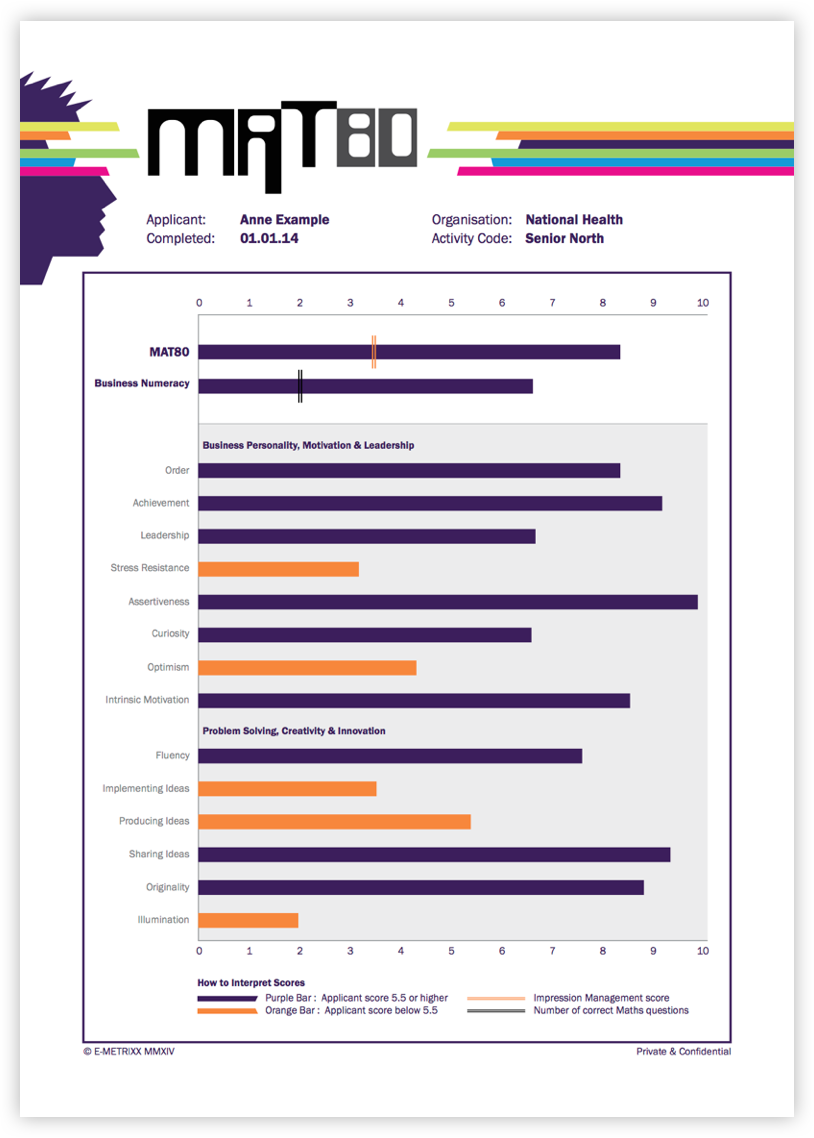Measuring Personality for Business Success
Assessing winning skills in business does not have to be left to subjective judgment. Personality scales developed for the MAT80 are based on extensive analysis and validation of scales using Bartram’s predictors of business success, as judged by managerial job performance.
Every psychometric item (question) has an average of 100 hours development, including language sensitivity testing for candidates with English as a second language, and confirmatory factor analysis to ensure the quality of the scales.
Overall Scores & Business Personality
Business Numeracy
The Business Numeracy section of the MAT80 is both a substantial test of pure IQ delivered in the language of business and a measure of ‘Applied Intelligence’ tapping into business acumen.
Additionally, the Business Numeracy questions assess wider, more important questions such as rule following, attention to detail and understanding business by numbers. The questions have been written in clear, unambiguous and internationally understandable language.
The Business Numeracy test delivers over 10,000,000 different combinations to candidates by randomising certain values, making it impossible to cheat.
Business Reasoning
This section of the assessment provides an insight into the candidate’s interest in business issues and ability to communicate clearly and effectively under pressure.
The open-ended format allows further insight to discriminate between high-achieving candidates, and provides basis for discussion in an interview.
MAT80 Group Report
Recruitment teams can also download at any time group reports showing the overall score for up to 25 candidates per page. This allows recruiters to easily scan and select those candidates with stronger scores.
MAT80 Candidate Report
The 25-page candidate report and interpretation guide can be used for training and development with successful candidates.
Each report contains the same sections as the recruiter’s report with full explanations to allow the candidate to see their scores. The interpretation provides positives and negatives for both high and low scores on each of the scales.
